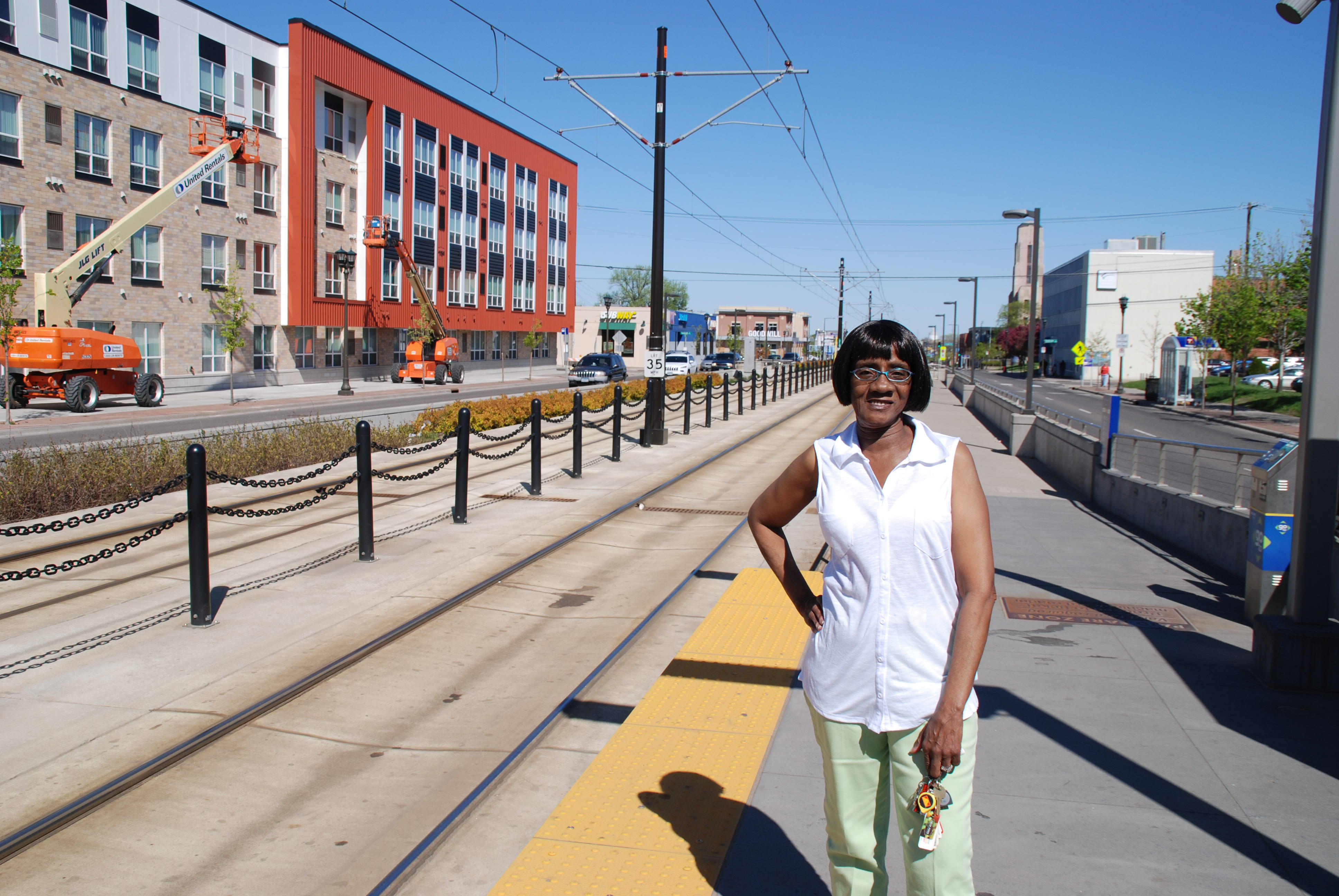 ReJeana Hill was waiting for a METRO Green Line train at Hamline Avenue Station when she spotted a newly-planted sign on the vacant lot across University Avenue.
ReJeana Hill was waiting for a METRO Green Line train at Hamline Avenue Station when she spotted a newly-planted sign on the vacant lot across University Avenue.
Apartments coming soon, it said.
Eager to find an affordable place with more room and easy transit access, she took out her cell phone and dialed the number immediately. Even before her application had been approved, she started packing and telling friends she was moving.
Less than a year later, she and her husband Matt were among the first to take up residence in Hamline Station, a two-building development that opened in late 2015 with more than 100 efficiency, one-, two- and three-bedroom apartments.
Now settled into a third-floor apartment overlooking the station, she warmly receives guests and talks proudly about her new apartment, which she describes as “heaven sent.” She also talks glowingly about the Green Line – a lifeline for her and her husband, neither of whom drive.
“It’s like my own personal limo, right outside the door,” Hill said of the Green Line, which she regularly uses to run errands, get to appointments and travel to church.
Hill wasn’t the only one drawn to the combination of affordable, quality housing and transit access. More than 600 applications were received before Hamline Station opened and now, just months after opening, all of the apartments are occupied.
“There’s a strong demand for affordable housing in general, and even more so when it’s in a great location,” said Rick Dahlmeyer, a project manager with Project for Pride in Living.
Project for Pride in Living, or PPL, provides affordable housing and employment readiness. The Minneapolis-based non-profit led the effort to build the apartments on what had been a vacated auto dealership in the northeast corner of University and Hamline avenues.
Residents at Hamline Station earn 50 to 60 percent of the median income; 14 units have been reserved for individuals or families that recently experienced homelessness and are receiving support from two local service providers, Guild Incorporated and Clare Housing.
Support for the $28 million project came from the federal, state and local levels. The Metropolitan Council provided nearly $3.5 million in grant funds to help with site clean-up and land acquisition. U.S. Bank helped raise capital by investing in low-income housing tax credits.
Kent Carlson, who owned the property, made the land available for redevelopment and retains ownership of ground-floor retail space that will become home to several businesses.
While the arrangements were complex, Dahlmeyer said the end product is something residents, PPL and all of its partners can be proud of. And it’s not just the fact that it’s the largest project the Minneapolis-based non-profit has taken from start to finish.
With transit and a mix of stores, restaurants and other services nearby it is entirely possible for residents like Hill to forego owning a vehicle. Many of the development’s 50 underground parking spaces have been left unclaimed.
“This is really our flagship TOD (transit-oriented development) project,” Dahlmeyer said.
With its success on University Avenue, PPL hopes to build more affordable housing in Hopkins, near the site of a station on the proposed Green Line Extension. The Council and its partners are also working to advance more affordable housing along the Green Line corridor and other transitways.
Hill considers herself extremely fortunate and hopes those efforts provide others the same opportunity she’s had at Hamline Station. “This has been such a blessing for me and my husband, I just can’t believe it,” she said.
> Learn more about Metro Transit's Transit Oriented Development office
> Learn more about Council grants
> Development along Green Line soars to more than $4 billion